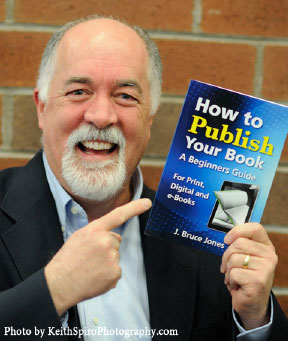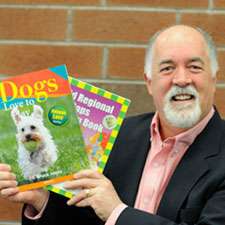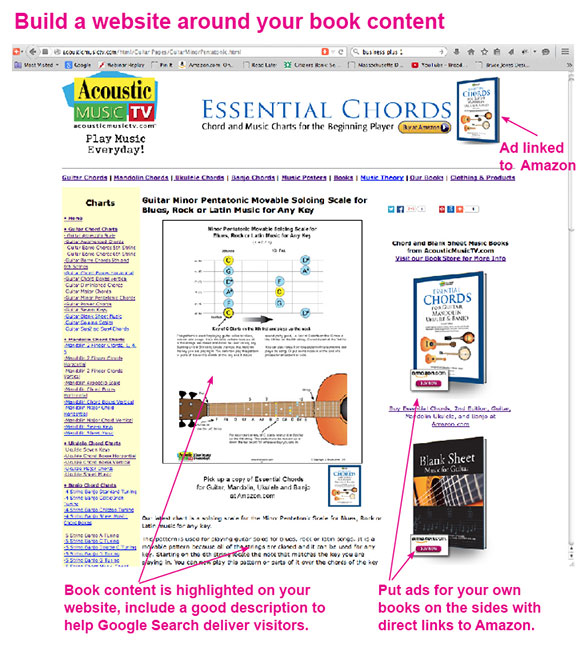You might also like:
 12 Lessons for Self-Publishing and Marketing Amazon Books
12 Lessons for Self-Publishing and Marketing Amazon Books
Guest Post by “Bruce the Book Guy” Jones

2014 was a great year for my publishing efforts. I had my best year yet for book sales, selling just over 3,600 books split over 32 titles with over $11,000 in sales. My goal was to get to $1,000/month, I have now hit that for the last three months.
My best-selling book, “Blank Sheet Music for Guitar” sold over a thousand copies but I also have some books that sold just one copy.
Most of my sales come from my paperback books sold through CreateSpace/Amazon using their print-on-demand service. I do much better with paperbacks then I do with Kindle, probably because of my subject matter.
I am completely in the non-fiction area of the market with books in music, geography, children’s, business and coloring.
Over the past few years I have learned a lot about publishing books, and condensed what I’ve learned into twelve principles.
If you follow the outline below, stick to these principles, and are persistent, I am confident you can create a solid passive income source through self-publishing.
So, let’s get into it, shall we?
How to Self-Publish Books on Amazon

Twelve Principles for Successful Self-Publishing
1. The most important sale for me is the first one. You’ve confirmed demand for the product, and you know that everything is working. From that point it just comes down to expanding your marketing.
2. Don’t put all your eggs in one basket. If you want to make money self-publishing, commit to the long-term. You may have to publish many different books. Not everyone agrees with me on this, and you can do all the testing you like, but you have really no idea which book will work until it’s out there. You will be surprised.
3. Don’t fall in love with your title. In my experience, the working title that you share with friends probably isn’t as focused on the subject of the book as it could be. It means something to you because you are working with all the time, but doesn’t necessarily mean anything to anyone else.
An example of this is when I was working on my music chord book I called it my “Notebook Music Chord Book for Guitar, Mandolin, Ukulele and Banjo,” as I thought it would go in my guitar gig bag like a notebook. After publishing it, I saw no one was buying it so I searched on Amazon for other instrument chords books and discovered that a number of authors used the word Essential in the title.
I changed the title to “Essential Chords for Guitar, Mandolin, Ukulele and Banjo” and it started to sell. One way to test your title is to put it into Amazon search and see if you end up with other similar books in the results.
4. Publish, Publish, Publish. Get your content out there, hit the publish button. Perfection freezes progress. You have to let your writing go out into the world. There is something magical that happens when you hit the publish button.
I often see this happen when writing blog posts. You struggle with a piece, hit “Publish” and all of a sudden you figure out what was wrong with it. You have clarity once you hit that button that you didn’t have before. You have to release your content.
5. If you don’t have an audience you don’t have sales. You need to market your books outside of Amazon; books won’t sell themselves.
6. Give away to get. That means don’t be shy about putting your content out online. Don’t worry about your stuff getting stolen; few people have the time to rip off someone else’s content. If someone likes what they see on your website, they will want your book. The best way to pique their interest is to share your best content.
7. You need lots of traffic to your sites to make sales. From what I’ve seen, sales generate from about 1% of your traffic. Just like direct mail marketing, you are working with very small percentages. The key is to market, market, and market.
8. Put ads on your websites for your books. Link all of the content to your Amazon sales page, so that you can drive sustained traffic (and sales) over time.
9. Keep one author name. It is far too difficult and time-consuming to manage different personas. Marketing online is about you, focus on building a brand, and making it easy to find you and your books.
10. Have good healthy book and video descriptions. Online searches are based on words, so include lots of descriptive words for your products. Guy Kawasaki used Google’s Keyword Tool to come up with the title for his book “APE: How to Publish a Book,” because the power of using keywords for online search is so powerful.
11. Small books are fine. To make more money, make and sell more books. People equate larger books as being more valuable, so you can out test different prices and find a sweet spot that works for each one. Someone who buys a short book from you for 99 cents may be induced to buy a longer one for 9.99.
12. Leave the earlier editions of your books online. Early editions are the equivalent of virtual used books. You can still sell earlier editions even after new ones come out.
13. A lot of books are still sold in print. Make both ebook (.Mobi) and print (PDF) versions of your books. You can also sell your PDFs virtually through Gumroad.
14. You can sell from inside your books. Amazon offers the feature to “look inside” your book, so it’s a great idea to include an offer immediately after your title page – such as an offer to download a free audio book. You can also crosslink and promote your other titles within your book.
15. Books find a sales level and then stay at that level for a long time.
I have found my books will reach a level of monthly sales and stay at that level for a long time, sometimes for months. I move copies of some books at different levels: 10-15 copies a month, 25-35 copies a month, (this is a good mid-level seller), and at 50-70 copies a month (best sellers). I also have some books that sell only 1 copy per month.
Some books are seasonal – up during Christmas, down in July. You have no idea where your book is going to be when you release it. But knowing this I operate under the view of make more books, make more money. Each book is like a little engine, chugging along. They pretty much all sell something. You have to do your marketing but your can build a nice little publishing business out of your books. A great tip to help with is sales is if you have a book that is selling then make more books on the same topic. Treat them as a series, volume 1, volume 2 etc. Amazon loves and promotes series, so build a series of books around each of your interests.
This was a guest post for OpenWorld Magazine by J. Bruce Jones.

J. Bruce Jones is a Boston based graphic designer and has been selling products online since 1996. He is the author of over 32 books and many other products. To find out more about Bruce visit http://www.BruceJonesDesign.com. Bruce has just released his first online video course on “How to Make a Children’s Picture Book for Kindle.” Bruce can also be reached by searching on and joining the FaceBook group “How to Publish Your Book.”





